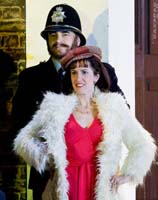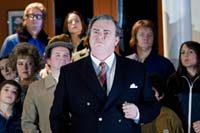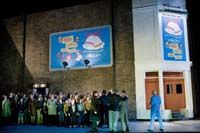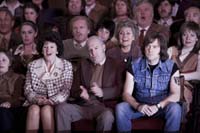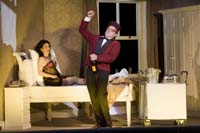Journal entries
Le Bon Journal
About
Search
Contact
Readers write
Show your support
Anne Ku writes about her travels, conversations, thoughts, events, music, and anything else that is interesting enough to fill a web page. She has written and produced two chamber operas, premiered in Utrecht, Netherlands. See her publication list for more.
Support the Bon Journal by keeping analyticalQ.com alive and free. Find out about Sponsorship or how else you can show your support
Bon Journal
English National Opera's Cavalleria Rusticana and Pagliacci at the London Coliseum (part two)
Like Mascagni, the composer Ruggero Leoncavallo (1857 – 1919) based his “only famous” opera on a play that he had seen before. Originally conceived as one act, it was later adapted to a prologue and two acts to allow time for scene changes. In the ENO production, there were four set changes: outside the theatre, inside the theatre, changing rooms, and a split scene with audience on the left and the stage on the right.
Pagliacci, which means players or clowns, is a play within a play, or rather, an opera within an opera. It is a comedy “Commedia” entitled “The troubles of Pagliacci” within a black comedy off-stage.
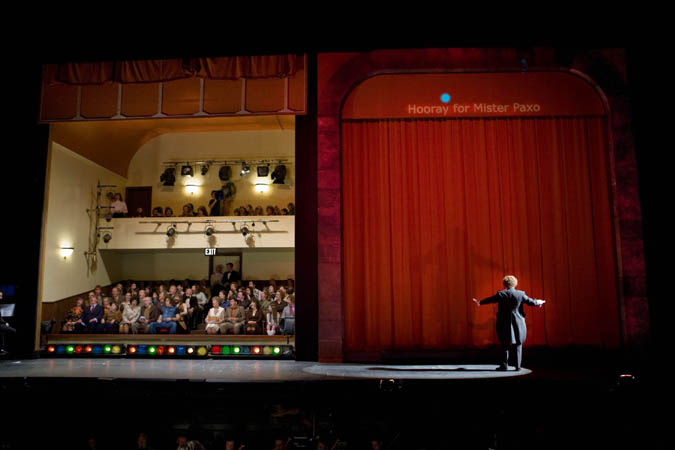 photo credit: Robert Workman
photo credit: Robert Workman
The ENO production reworks Pagliacci in North England in the 1970’s. Similar to Cavalleria Rusticana, the music of Pagliacci includes plenty of choral singing (provided by the on-stage audience who attends the show), soaring arias, and beautiful love duets. The parallels between the show and real life become too coincidental as the hero Kenny discovers his wife Nelly’s infidelity off stage but enacts it onstage, much to the stage manager’s surprise and horror.
Prior to the Prologue, a gentleman in a suit announced that the part of Brian was to be played by someone else. I didn’t catch the name of the substitute actor and suspected it to be the understudy whose name I failed to locate in the programme booklet. It was then that I wished I knew the singers, for it would make the concert going experience even more meaningul. I was neither familiar with the opera Pagliacci, its composers Leoncavallo, or any of the musicians. Could it be that familiarity does breed better appreciation?
The experience of going to the theatre to watch a comedy is familiar to many of us. It’s a joyous activity that we like to share with others. The audience trickles in and fills the hall, with the crescendo of voices whispering “shhh” just before the curtains rises. By then, part of the story has already been told back stage: Nelly has a lover, the stage carpenter Woody. Tony, the comedian who also loves Nelly, discovers her affair and tells Nelly’s husband Kenny who is Mr Paxo. The timing couldn’t be worse, as the actors prepare to go on stage caught in the emotions stirred by this turn of events.
In 75 minutes, I watched what I thought started as a comedy, within very stirring melodramatic developments that led to a tragic but shocking ending --- not a comedy. Here I witnessed interesting characters in double roles: the wicked comedian Tony who prologues the opera seeks to destroy Kenny (Mr Paxo) and Nelly’s marriage since he couldn’t have Nelly for himself; Kenny, who changes from the main comedian to the a tormented husband with a vengeance and acts it out; Nelly who is unfaithful both in real life and in the comedy. The most famous aria from this opera is Mr Paxo’s Vesti la giubba or “on with the motley,” a self-pitying lament which expresses his torment at having to act while feeling deceived.
As much as I had enjoyed the first part of this double bill (Cavalleria Rusticana), the interesting scene changes of Pagliacci soon took over my attention. The storyline, characters, scenes, and music kept me on my toes, you could say. It was a delightful way to end three consecutive nights of opera in London.
Part one: Cavalleria Rusticana

